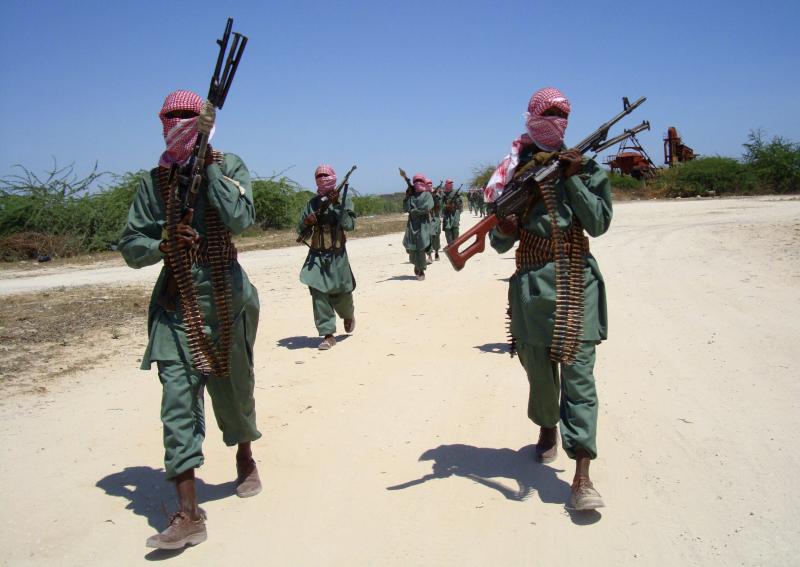Despite US airstrikes, Al-Shabaab group still active

By U.S. accounts, it was a devastating airstrike against Islamic militants in Somalia, with more than 150 fighters killed in a training camp. But the weekend attack probably won’t diminish al-Shabab’s ability to continue a wave of bloodshed.
African Union ground forces succeeded in ousting al-Shabab fighters from Somalia’s capital in 2011 and protecting the weak government. Since then, however, they have been unable to stop other violence: assaults on AU forces, including one that killed up to 200 Kenyan soldiers in January, frequent suicide attacks on civilians in Mogadishu, and an unsuccessful attempt last month to bring down an airliner with a bomb.
The forested military training camp, located 200 kilometres (125 miles) north of Mogadishu, was al-Shabab’s main planning base, a Somali intelligence official said Tuesday.
Somalia’s intelligence service co-operated with the U.S. in its airstrike, said the official, who spoke on condition of anonymity because he is not authorized to talk to the media on this matter.
U.S. forces had been watching Raso Camp for several weeks, said Navy Capt. Jeff Davis, a Pentagon spokesman. It appeared that their training was ending and the operational phase of a suspected attack against African or U.S. personnel was about to start, he said.
About 50 U.S. special operations forces rotate in and out of Somalia, advising and assisting military forces sent by five countries belonging to the African Union.
The airstrike appears to have caused more casualties than any other attack against al-Shabab, said J. Peter Pham, the director of the Atlantic Council’s Africa Center.
Previous U.S. airstrikes have killed al-Shabab leaders, including Ahmed Abdi Godane, who had been the group’s top commander, in 2014. And yet the group, far from being vanquished, came back with ferocity.
Al-Shabab vowed to avenge Godane’s death and later carried out a series of attacks in Mogadishu and in neighbouring Kenya.
African Union ground forces and U.S. missile attacks have simply not been able to obliterate the al-Qaida-linked group, which the U.S. State Department declared a terrorist organization in 2008 and has proven to be resilient. The official number of al-Shabab fighters remains unclear, but estimates put them at fewer than 10,000.
“That al-Shabaab had that many recruits in training at just one location … is a worrying indicator of the group’s continued relevance and its power to attract,” Pham said. “The fact that al-Shabab feels emboldened enough to gather so many together in one place, these are hardly signs of a group on the run.”
The insurgency by al-Shabab, which is fighting to impose a strict version of Islam in Somalia, “is clearly far from finished,” Pham said.
Davis, the Pentagon spokesman, said the attack involved both missiles and bombs that destroyed the training camp. He said the U.S. estimated that as many as 200 fighters had been there, including a number of trainers. He said there were no known civilian casualties. That could not be independently confirmed.
Further U.S. airstrikes alone are unlikely to thwart al-Shabab’s attacks around Mogadishu, said Robert Besseling, an analyst with EXX Africa. Al-Shabab, which traditionally has operated in southern Somalia, has even expanded its operations northward into the central region of Galmudug and the semiautonomous region of Puntland, he said.
Besseling said al-Shabab has infiltrated many districts in northern Mogadishu where the group operates safe houses to co-ordinate logistical support and plan attacks.
He warned: “Attacks in and around Mogadishu on individuals or groups associated with the government are likely to intensify.”
AP